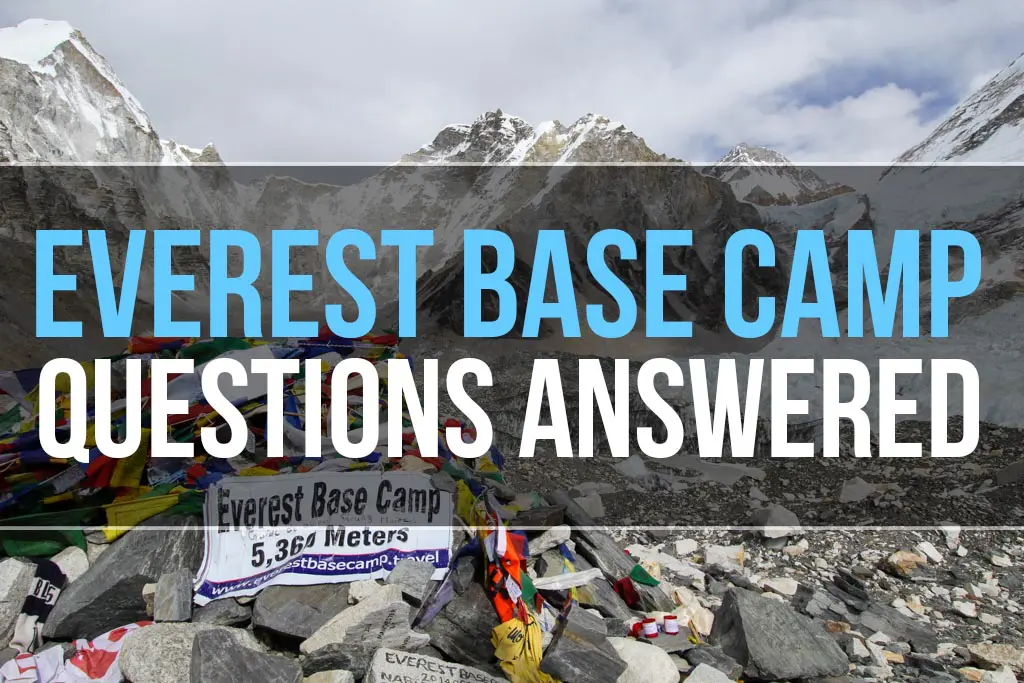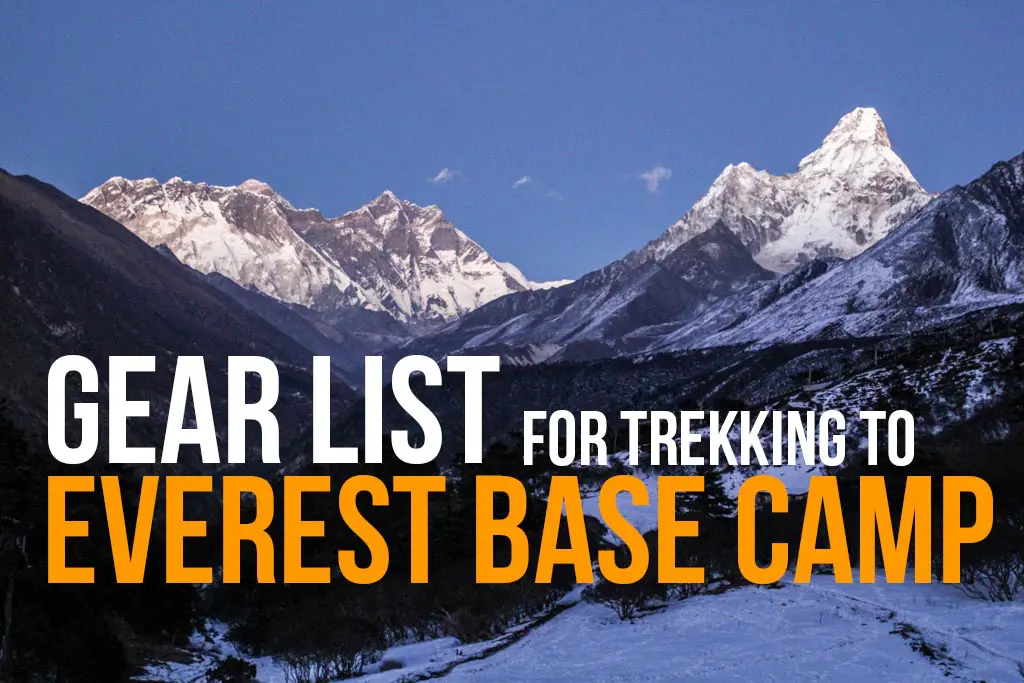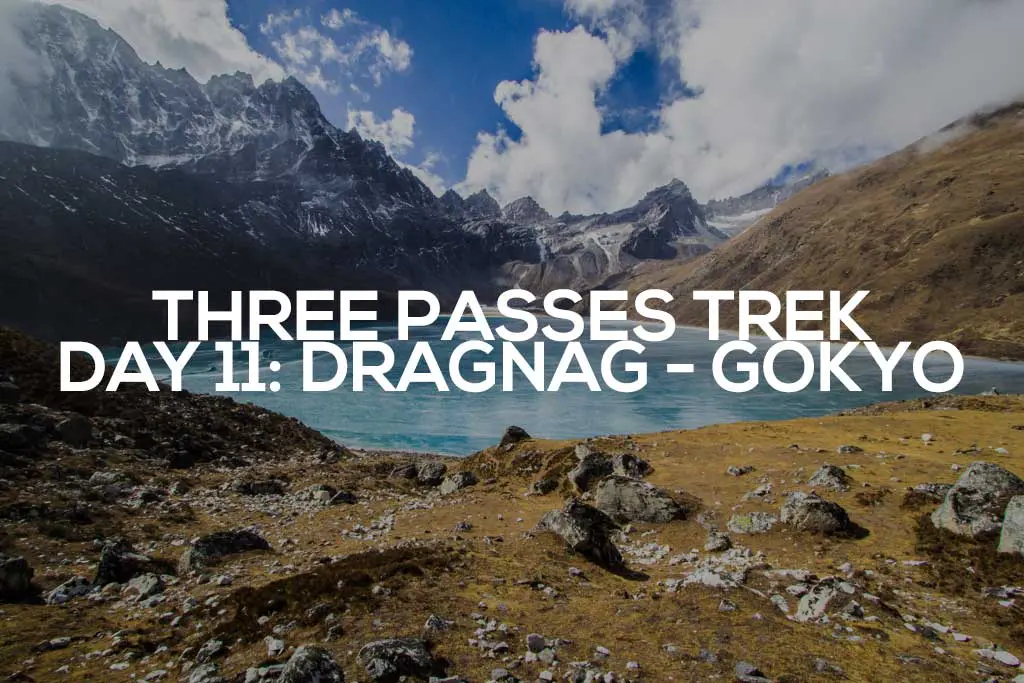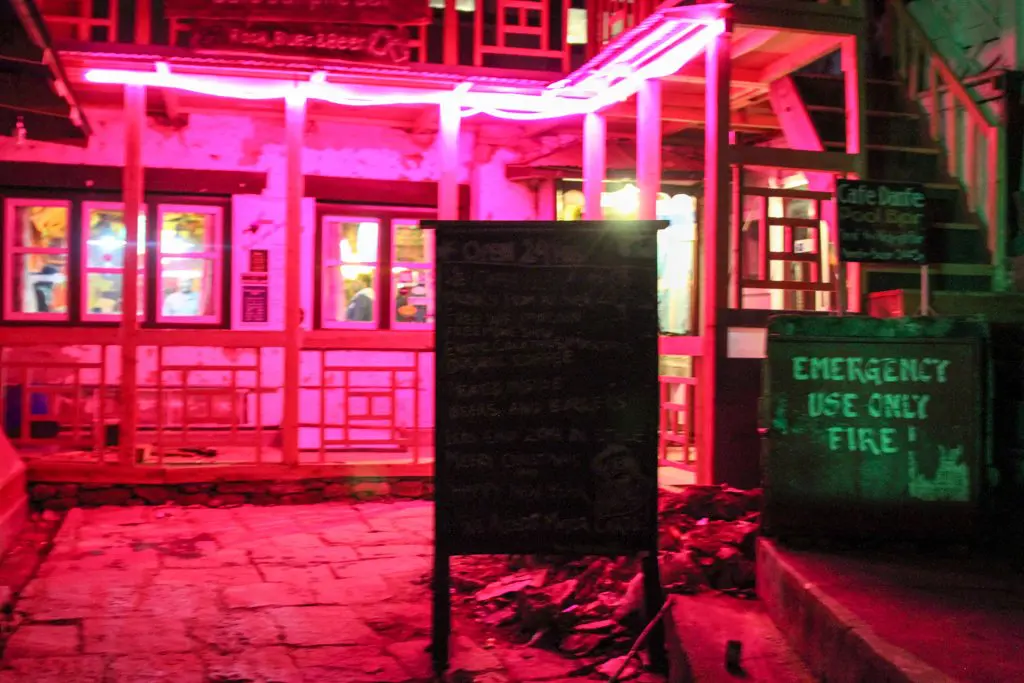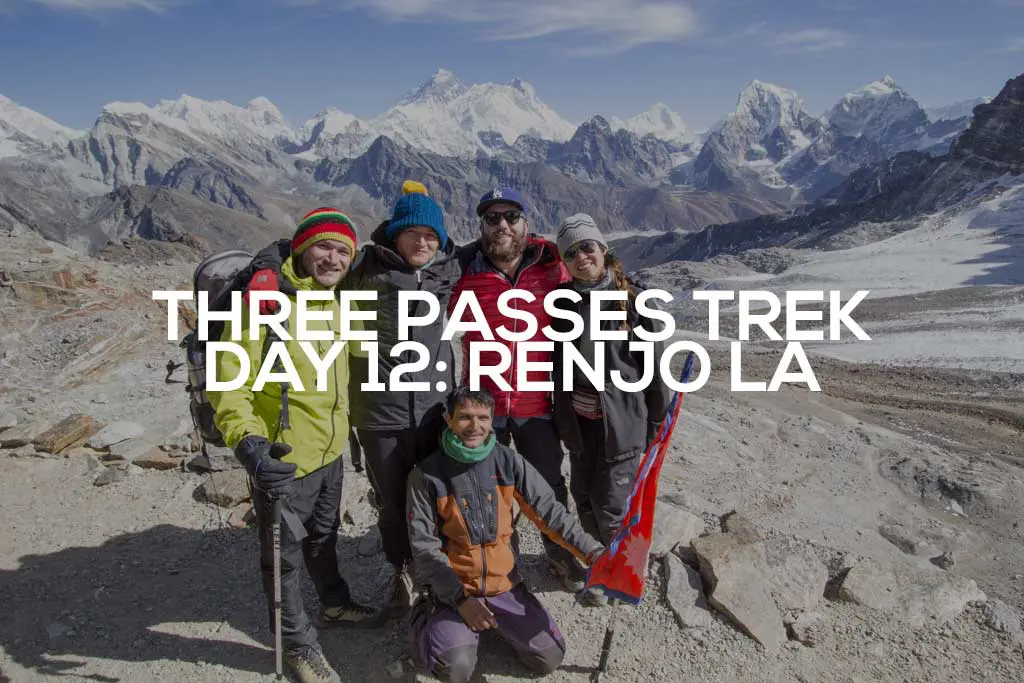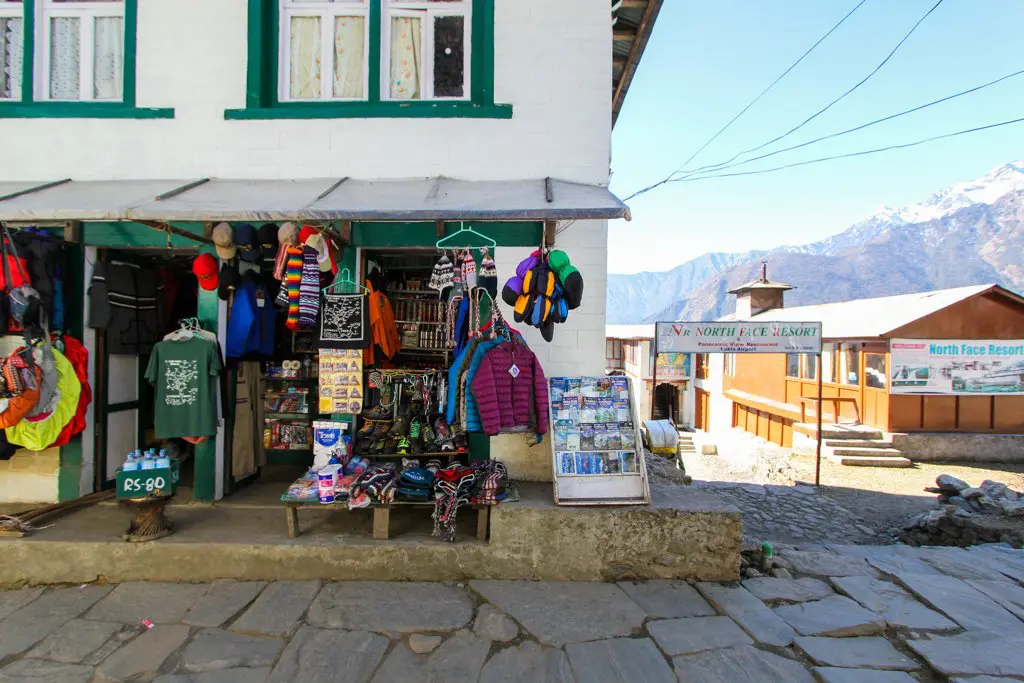Everest Base Camp Trek Questions Answered!
Before heading off to Everest Base Camp, I wrote this post inspired by all the questions I had but was having difficulties finding answers to.
Now, having successfully returned from the adventure, I will share with you all the surprisingly difficult to find information that I learned on the way to the foot of the world’s highest mountain.
Here are the questions, as originally written, with the answers based on my personal experience in the Himalaya (aka, results may vary).
NOTE: My trek took place at the end of December/beginning of January (the off-season).

- How much snow can I expect on the trail?
- What are the daytime temperatures going to be like? The nighttime temperatures?
- How much is this thing going to cost me?
- Do I need to hire a guide?
- How much is accommodation?
- How much is food?
- Do I need to get permits?
- How much are permits?
- How long is the trek itself?
- How do I get to the trailhead once in Kathmandu?
- How much faster is coming back down?
- Do I need a visa?
- How feasible is camping my way up the trail?
- Are there places to stay if the weather turns?
- How many miles can I expect to hike a day?
- How many acclimatization days do I need?
- What day hikes can I do while acclimatizing?
- When do I get to see a snow leopard?
- What gear should I bring?
- How warm of a sleeping bag do I need?
- How much food should I bring?
- How many layers is enough?
- Do I really need a stove?

How much snow can I expect on the trail?
Snow was very minimal. There were a few areas where the trail was covered with snow (or ice), but all the trails are so frequently used that it would be incredibly difficult to find yourself getting lost or off-trail because of the snow (especially because many times your following a ridge, valley, or can see the next village).
What are the daytime temperatures going to be like? The nighttime temperatures? How cold is really cold?
The daytime temperatures I experienced were nothing too extreme (and nothing like the daytime temperatures I experienced in Wisconsin). Below 12,696 ft / 3,870 m I only wore my pants and shirt. Above, I began wearing my synthetic base layer, and it didn’t come off until nearly the same point in my return journey.
In the mornings I wore my large down jacket before my body got warmed up, and on the way up Chukhung Ri and Kala Patthar (each 18,208 ft / 5,550 m), I needed to wear my warm gloves to keep my hands from becoming icicles.
How much is this thing going to cost me?
Once in the country you need to get yourself to Lukla. This can be accomplished by aeroplane from Kathmandu for around $150 each way. However, hiking to Lukla from Jiri (which can be reached by bus) is also an option (and apparently takes around a week). If I had more time for my trek I would have absolutely chosen to do this (especially since these lower elevations are far less crowded with trekkers.
I would say that everything – including a round trip flight from Kathmandu to Lukla, cost me – at the very most – $450 US.
Do I need to hire a guide?
If you’re comfortable hiking alone (or with whomever you’re going with) and talking to strangers, then there’s no need for you to hire a guide to reach Everest Base Camp. The trail is incredibly well-worn, and junctions are clearly marked with signs written in English. The villages are all relatively close together – to become hopelessly lost in the Himalaya (if you’re following trails) would be difficult.
There are guides, porters, trekkers, and locals all over the place, so if you ever want some information you can always just ask. I found everyone to be very kind (except that one guy).

How much is accommodation?
Accommodation on the road to Everest Base Camp is incredibly cheap (and not very luxurious). The average price for a room in one of the many Himalayan lodges was around 200 rupees or $2 US. Camping outside was (for me at least) always free. If you want to camp outside town this would be possible in many areas as well.
How much is food?
The meals in the lodges usually run between 300 and 1,000 rupees (~$2.80 – $9.80 US) with the higher end of the spectrum reserved for meat (which I never ate) and specialty dishes (lasagna or pizzas). As you would expect, the higher into the mountains you travel, the more expensive things become, but you can usually find something for four or five hundred rupees at just about anywhere. Dal bhat (and it comes with refills too!).
Do I need to get permits?
Yes, you need two permits to trek to Everest Base Camp. Fortunately, both can be procured along the way and you need not worry about getting them beforehand.
How much are permits?
You (technically) need two permits to make the trek to Everest Base Camp: a Sagarmatha National Park and a TIMS Card. The good news? Both can be obtained on the way to EBC and you need not do anything special beforehand. The bad news? They cost about $20 US each.

How long is the trek itself?
The trek from Lukla to Everest Base Camp (including a Kala Patthar summit) is about 65.2 mi / 105 km round trip – nothing too intimidating given that most people take almost two weeks to complete the journey. The reason you can’t simply crush it up to EBC and back in three days is because of the altitude (you can, however, crush it on the way back if you wish).
How do I get to the trailhead once in Kathmandu?
For this you have two options.
- You can take a bus from Kathmandu to Jiri and hike up to Lukla from there (which can take as long as a week, but can apparently be done in four or five days – or probably quicker if you’re pushing it).
- You can fly from Kathmandu to Lukla. This is what I did because I didn’t have enough time in Nepal to allow for a hike up from
How much faster is coming back down?
A lot faster. From Tengboche (12,687 ft / 3,867 m) to Gorak Shep (16,863 ft / 5,140 m) I took five days. The way down took one. I would wager that you could even make it from Gorak Shep down to Namche Bazaar (11,290 ft / 3,440 m) or even all the way back to Lukla (9,100 ft / 2,800 m) if you really went for it.
If you feel strong enough, a two-day descent from Gorak to Lukla is realistic. One day if you’re a beast, and three or four days if you’re taking your time.
Do I need a visa?
To enter Nepal? That depends. If you enter on a US passport (like I did), you can get your visa on arrival (if you fly into Kathmandu’s Tribhuvan International Airport or enter via one of the entry points listed in Section 8 here) and can choose how long you want to stay – $25 US for 15 days, $40 for 30 days, and $100 for 90 days. As far as bringing a photo with you: I did not need a photo at the airport (you could take one there), but having a photo (2″ x 2″ / 5 x 5 cm) helped expedite the process (so bring one if you can).
For the rest of you, here is a link to Nepal’s official immigration website.

How feasible is camping my way up the trail?
From what I saw there weren’t any campgrounds, but I really got the feeling that you could just camp wherever you want. I usually camped in the courtyard of or out behind a lodge (most of the time after having asked permission – and always for free). If you want to sleep outside the villages, the trail offers plenty of space for camping along the way. Just make sure you aren’t going to be trampled by an angry herd of yaks in the night.
Are there places to stay if the weather turns?
Yes. Every village (and even between villages) has accommodation for trekkers. I did this trek during December/January (the low season), and so the lodges were never full. During the high season (September/October) I would expect that the lodges are all packed and may even require reservations.
How far can I expect to hike a day?
The altitude limits your daily hiking distance, and since you don’t want to mess with altitude sickness, you had best limit your vertical gain each day. My longest day on the trek (upwards) was 6.9 mi / 11.1 km from (15,518 ft / 4,730 m) to Dughla (15,157 ft / 4,620 m). My shortest? From 2.2 mi / 3.5 km from Dughla (15,157 ft / 4,620 m) to Lobuche (16,142 ft / 4,920 m).
How many acclimatization days do I need?
The usual answer prescribed for this question is two. You need (at least) two acclimatization days on the way to Everest Base Camp. Most people take these days in Namche Bazaar (11,290 ft / 3,440 m) and Dingboche.

What day hikes can I do while acclimatizing?
Most people take their acclimatization days in Namche Bazaar (11,290 ft / 3,440 m) and Dingboche. From Namche Bazaar you can do a loop hike to the villages of Khumjung and Khunde if you want a longer trek, or you can just take a short hike up to the Everest View Hotel with the trekking groups.
From Dingboche you can either venture up the peak just north of (and visible from) the village with a crowd of people (note: most people do not actually summit this peak and simply turn around along the way because apparently, it turns into a technical scramble at some point), or you can do what I did and kill yourself heading up to the top of Chukhung Ri (18,208 ft / 5,550 m).
When do I get to see a snow leopard?
Never. You never get to see a snow leopard.
However, if you like yaks and pack animals, then this is the trek for you.
What gear should I bring?
I used everything that I brought with me up to Everest Base Camp (although it took a pre-dawn hike up to 18,208 ft / 5,550 m to necessitate the use of my wool base layer and gloves.
For a look at everything in my pack, check you my Everest Base Camp gear list.
How warm of a sleeping bag do I need?
If you plan on sleeping outside – a very warm sleeping bag. Temperatures easily drop below 15 °F / -9 °C and a three season sleeping bag will not cut it. However, if you plan on staying in a lodge every night (which is not a difficult thing to do), then you might be able to get away with something like a 15 °F / -9 °C bag if you use it with the blankets provided by the lodge (and take a few extra). I used a Mountain Hardwear Wraith, slept most of my nights outside, and loved it.

How much food should I bring?
Honestly, you could get away not bringing any food at all. The villages are all close enough together that you’re never more than a few hours from a cooked meal, and even between villages there are plenty of isolated shops selling everything from candy bars to toilet paper.
I recommend stocking up on snacks in Kathmandu and then eating maybe one meal per day at the lodges (but it’s totally up to you, the meals aren’t expensive (maybe $12 US for the most expensive thing at the highest village – Gorak Shep).
TIP: save your snacks for eating farther up the trail – things are still relatively cheap in Lukla, Namche Bazaar, and the lower elevation villages.
How many layers is enough?
This answer is specific to me (a guy who likes to hike in shorts in the winter), but the answer is four. Four layers is enough (again, if you’re me).
I had my shirt, convertible pants, a synthetic base layer (that I used from Dingboche on), and a SmartWool NTS Mid 250 layer that I only used at Gorak Shep and climbing Kala Patthar.
On top of that I used one of two down jackets (either a Mountain Hardwear Ghost Whisperer or a large Columbia 800+ Fill Down Jacket). I was always comfortable and never wished that I had brought more (or fewer) layers.
Do I really need a stove?
No, you don’t really need a stove.
I originally asked this question because I have converted to stoveless, but had read a lot about how you are going to need hot food and drinks up in the Himalaya. Why I continue trusting things I read on the internet is a mystery to me (I don’t even know what you’re doing reading this).
Whenever I needed to get myself a hot beverage or warm meal, I did so at one of the many lodges on the way to Everest Base Camp. You’re never far from a kitchen-cooked meal – the quality of which is likely higher than can be accomplished with your meager camp stove.
